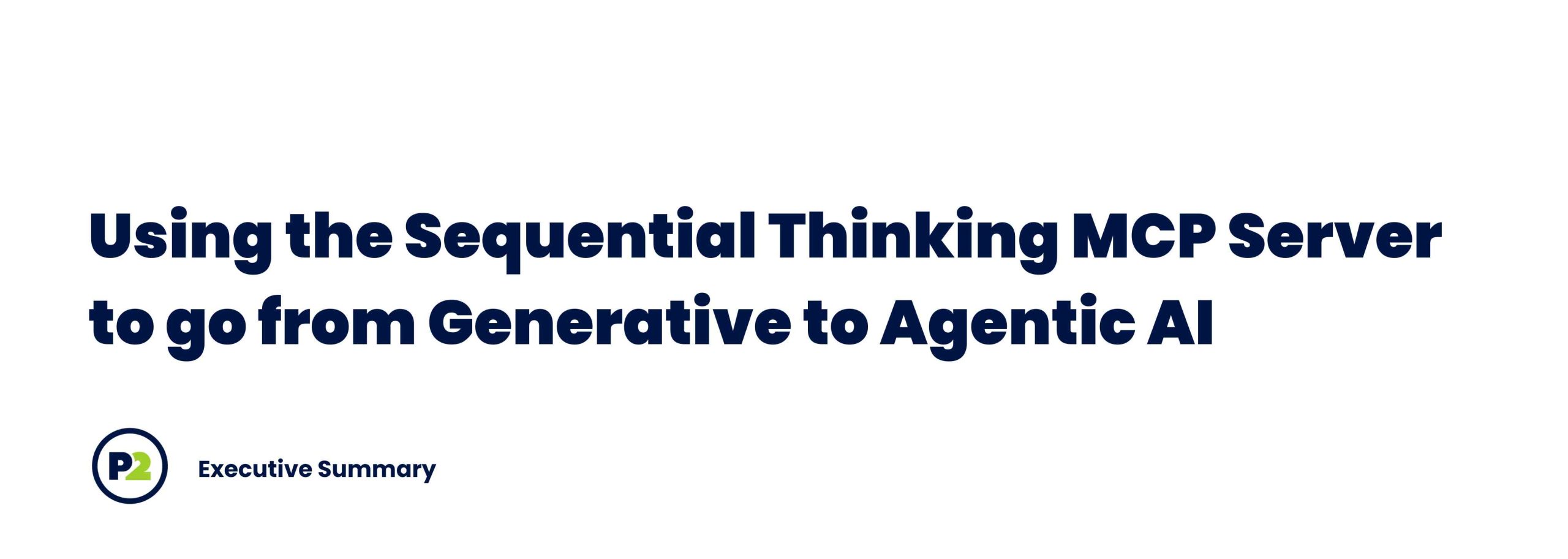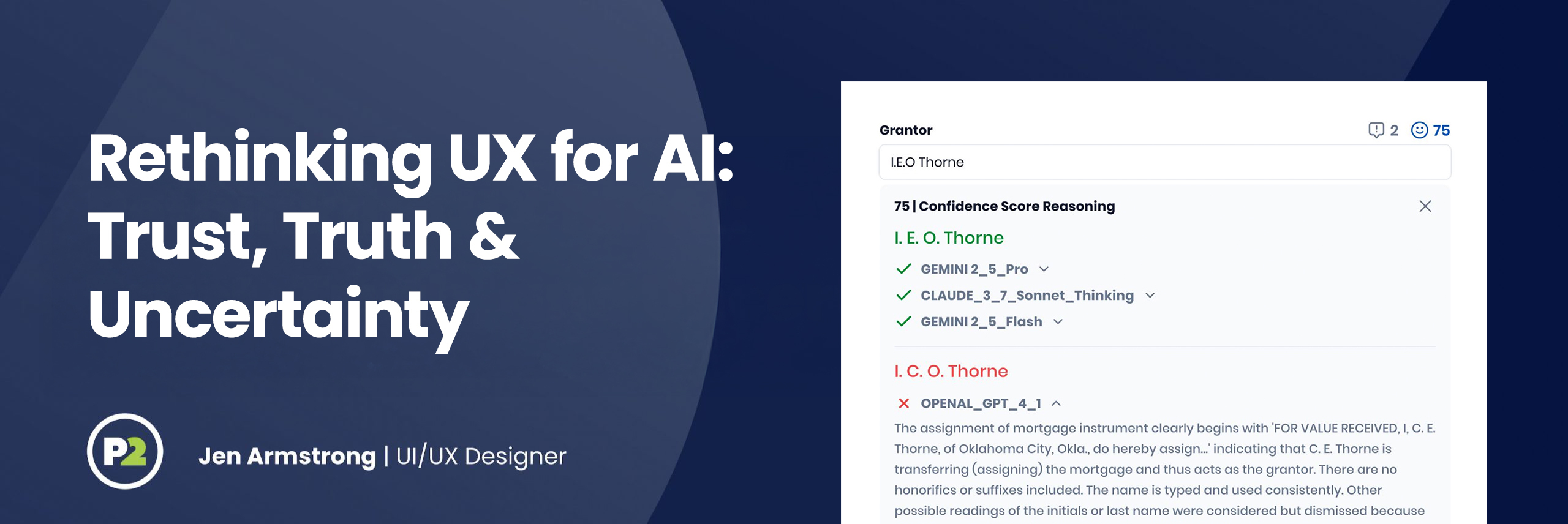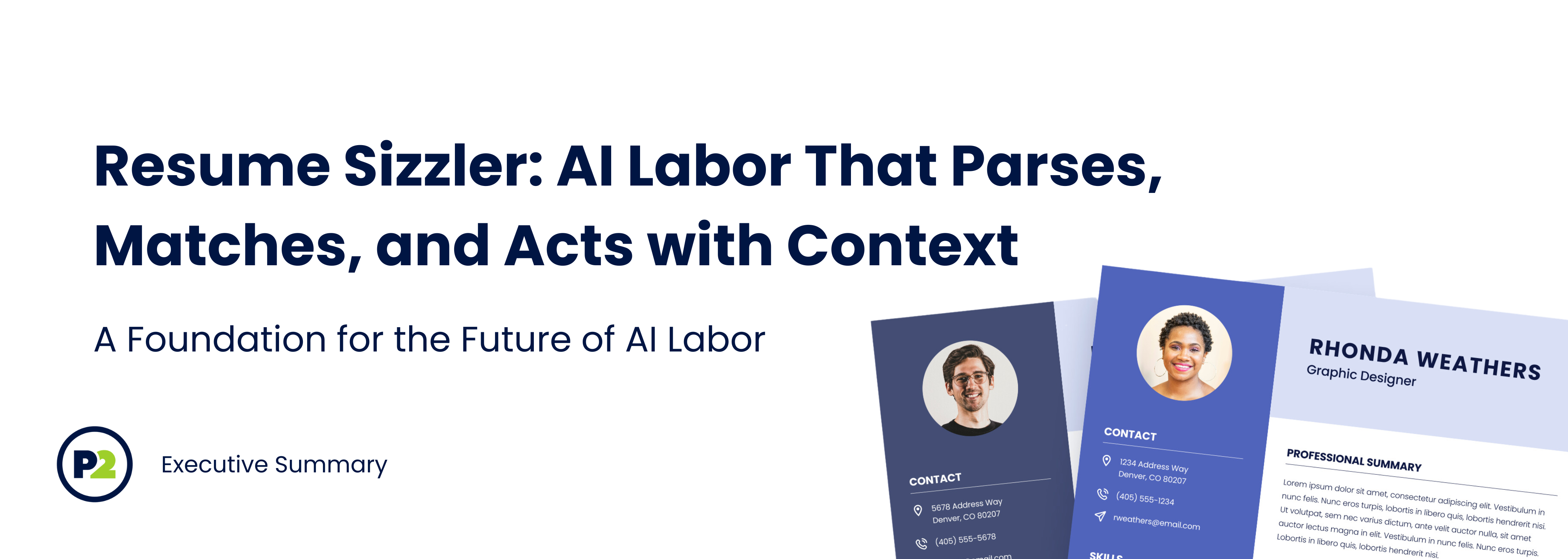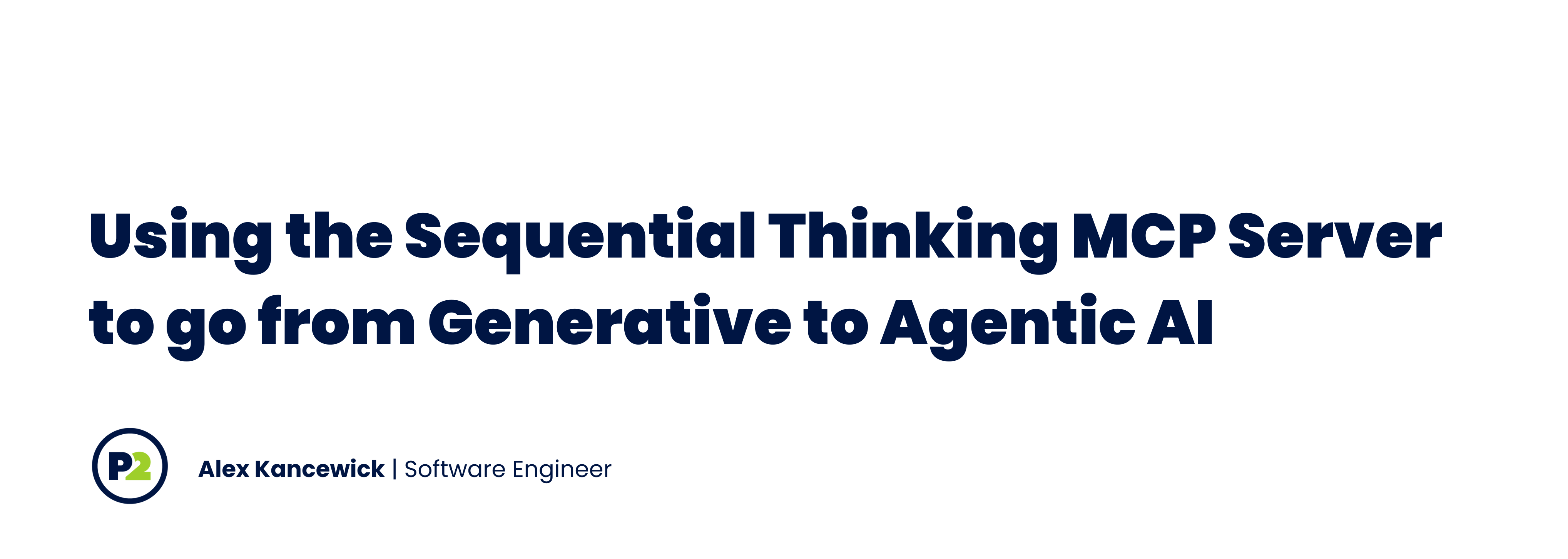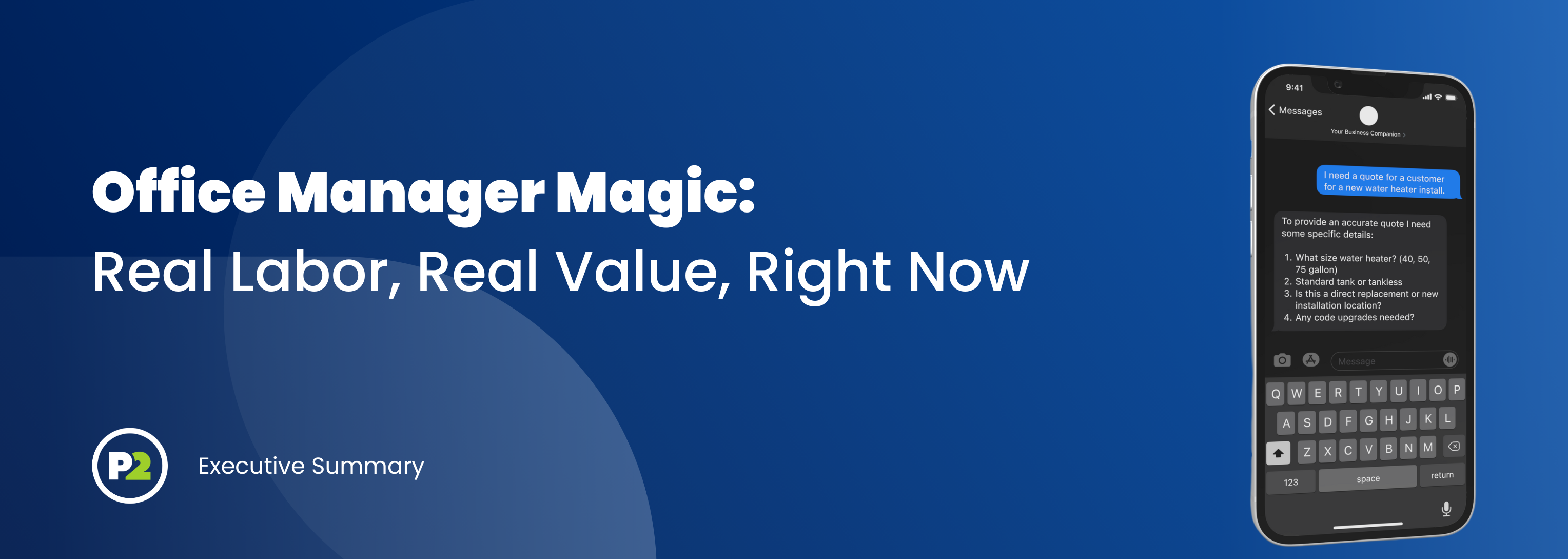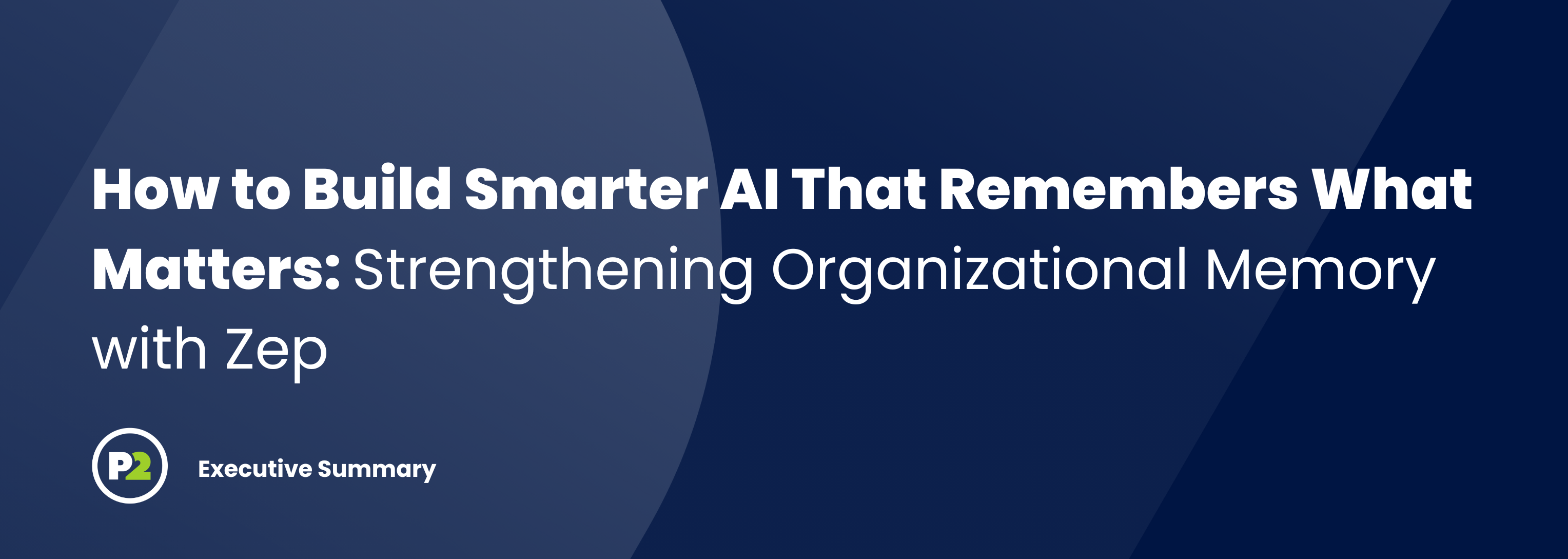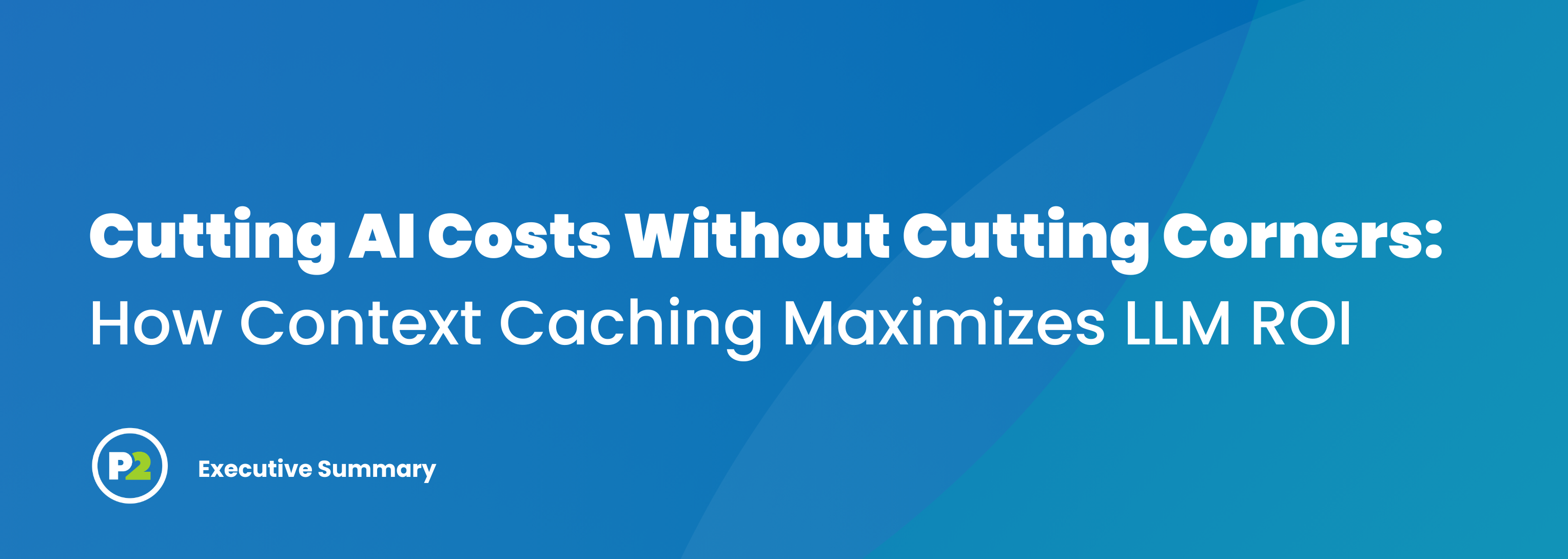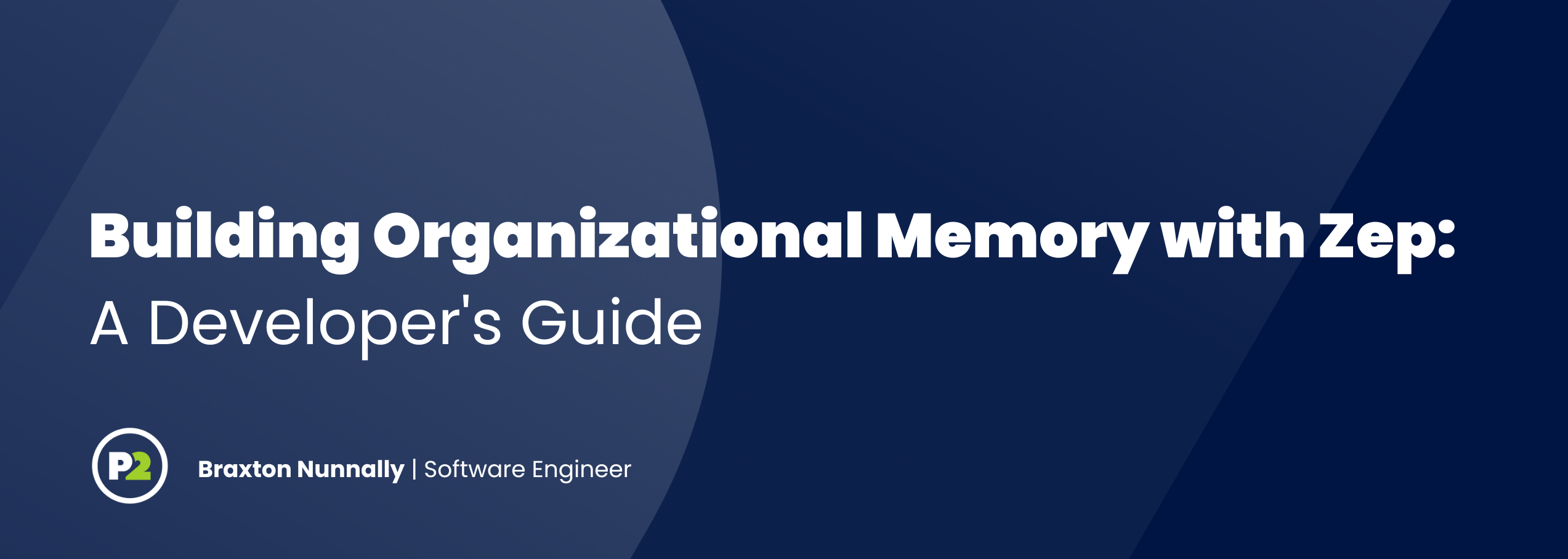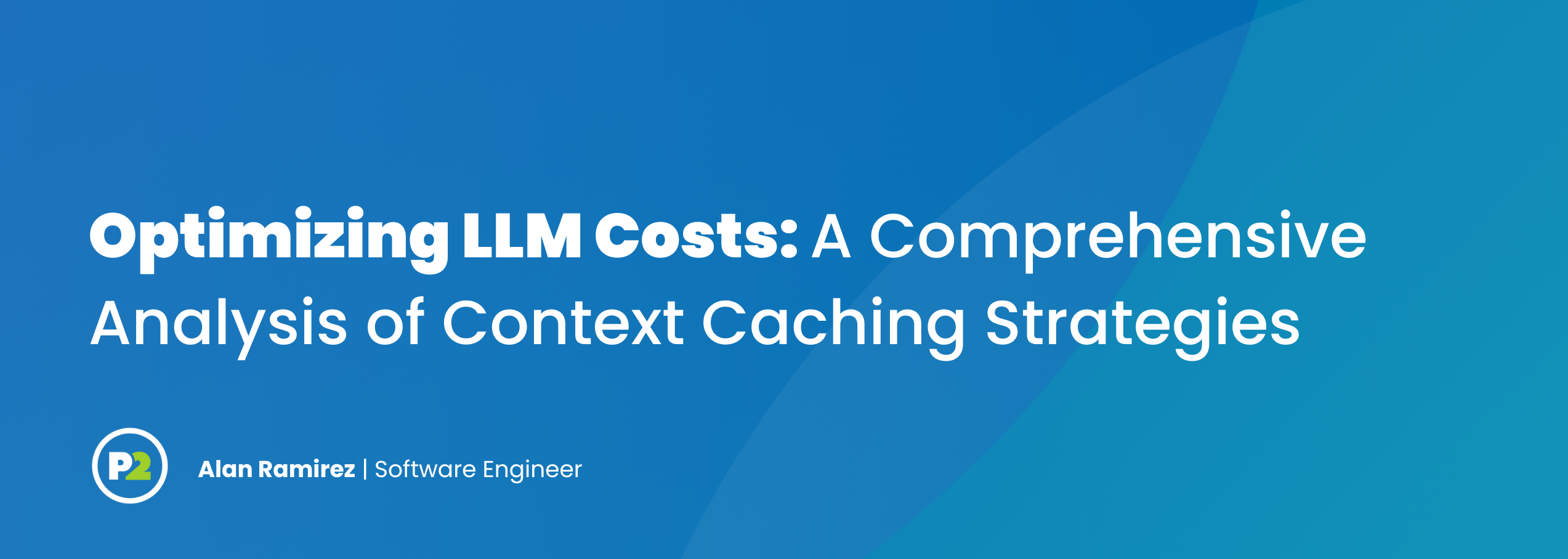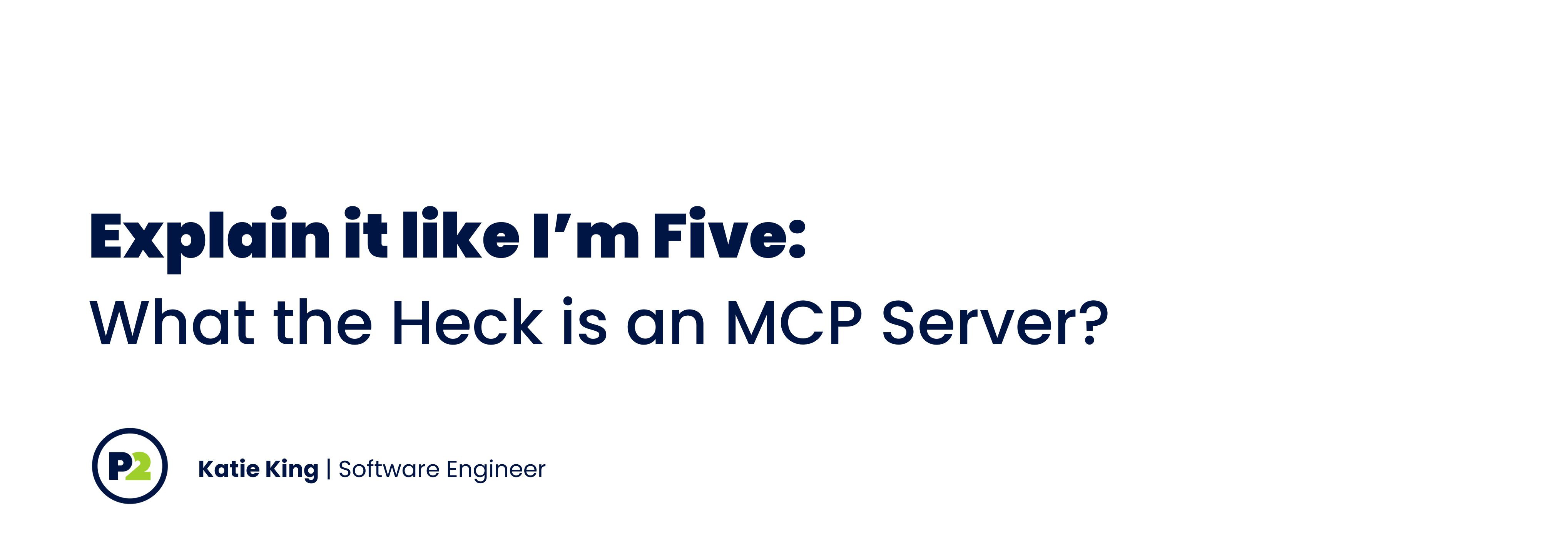Executive Summary: Using the Sequential Thinking MCP Server to go from Generative to Agentic AI
Structured AI: The Next Leap in Business Efficiency Alex Kancewick of P2 Labs’ most recent blog explores how Anthropic’s Sequential Thinking MCP Server showcases the practical power of structured reasoning in AI. More than a technical proof of concept, this approach signals a shift in how businesses can operationalize artificial intelligence to address real-world challenges with clarity, precision, and speed. What Is the Sequential Thinking MCP Server—and Why It Matters for Business The Sequential Thinking MCP Server is built on Anthropic’s Model Context...
Read Post
